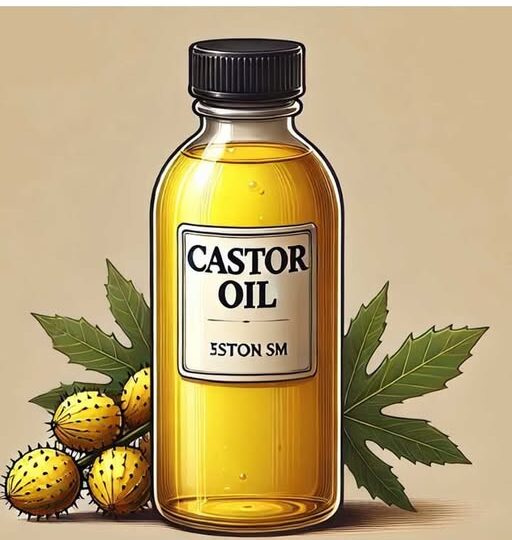Introduction
Castor oil is a thick, pale-yellow vegetable oil extracted from the seeds of the Ricinus communis plant. Celebrated for centuries, it is widely used in traditional medicine, skincare, haircare, and natural wellness routines. Its unique composition—particularly ricinoleic acid—gives it moisturizing, anti-inflammatory, and antimicrobial properties. Today, castor oil remains a versatile remedy in modern households and holistic health practices.
Origin
The Ricinus communis plant is native to Africa and parts of the Middle East, especially Egypt. Ancient Egyptians were among the first to cultivate it, using castor oil for lamps, medicine, and beauty rituals. It later spread to India, China, and the Mediterranean, where it became a staple in folk medicine. Over time, castor oil gained global recognition and is now produced in tropical and subtropical regions worldwide.
Cultural Significance
Castor oil holds deep cultural importance across multiple civilizations.
- Egypt: Used for illumination and beauty treatments.
- India: A foundational remedy in Ayurveda for digestive and skin ailments.
- Jamaica: Black castor oil is prized for strengthening hair and stimulating growth.
Beyond its healing associations, castor oil symbolizes purity, vitality, and nature-based wellness. Its presence in cultural rituals and homemade remedies highlights its enduring value.
Optional Additions
- Coconut oil or jojoba oil to dilute thickness
- Essential oils (lavender, rosemary) for fragrance or added benefits
- Shea butter for skincare blends
Tips for Success
- Choose 100% pure, cold-pressed castor oil
- Store in a cool, dark place
- Patch-test before applying to skin
- Use sparingly—rich and heavy texture
- Avoid contact with eyes unless product is approved for such use
Instructions
- Clean the area of application (hair, skin, nails).
- Apply a small amount of castor oil with clean fingers or a cotton pad.
- Gently massage to enhance absorption.
- Leave on overnight or rinse after 30–60 minutes, depending on use.
- Repeat 2–4 times per week for desired results.
Description
Castor oil is a viscous, odor-mild natural oil primarily composed of ricinoleic acid. Its texture is thick and slightly sticky, making it uniquely hydrating and soothing. Used internally in some traditional practices (though modern medical use is limited), it is most commonly applied topically to moisturize skin, nourish hair, and support overall wellness.
Nutritional Information (per topical context)
- Ricinoleic acid: ~90%
- Omega-6 and omega-9 fatty acids
- Vitamin E
- Trace minerals
Although not typically consumed today, these constituents support its moisturizing and antioxidant abilities.
Conclusion
Castor oil remains one of nature’s most versatile plant-based remedies. Its historical roots, cultural reverence, and wide range of topical benefits make it valuable for hair, skin, and natural care practices. Pure, cold-pressed oil provides the best results and maintains its traditional therapeutic qualities.
Recommendation
- Use consistently but moderately
- Combine with lighter oils for easier application
- Buy from reputable sources to ensure purity
- Consult a healthcare professional before internal use
Castor oil is generally safe for most people when applied topically, though patch-testing is always recommended.
Embracing Healthful Indulgence
Incorporating castor oil into personal care rituals invites a return to nature’s simplicity. Its rich texture, cultural heritage, and soothing qualities make it an indulgence rooted in wellness and tradition. Whether applied to hair, skin, or nails, castor oil encourages mindful self-care that nourishes the body—celebrating gentle beauty in its purest form.
